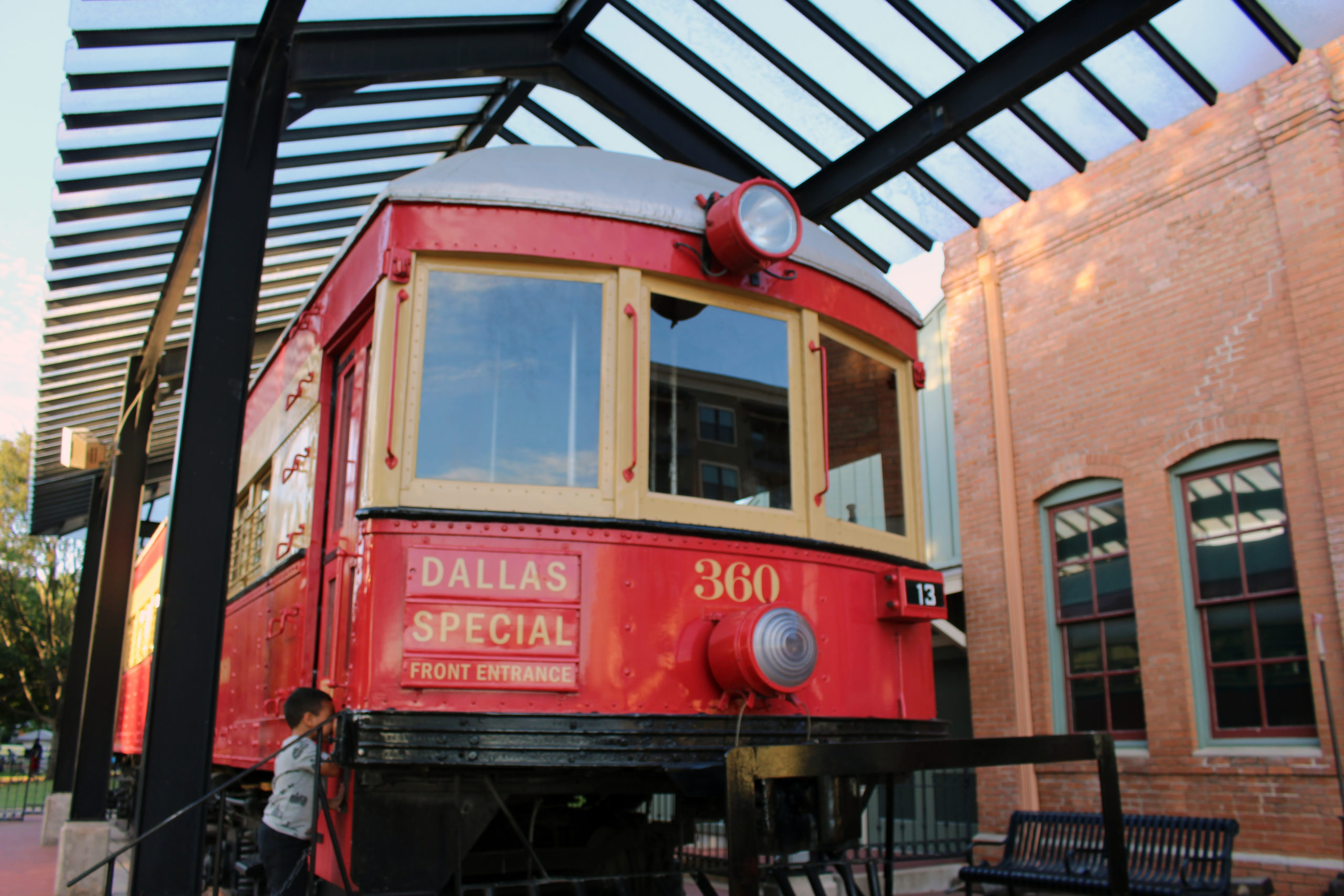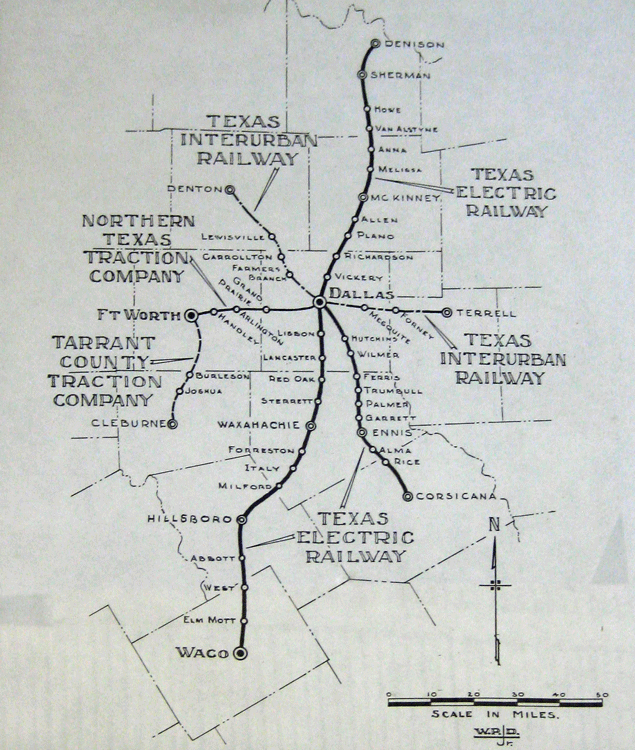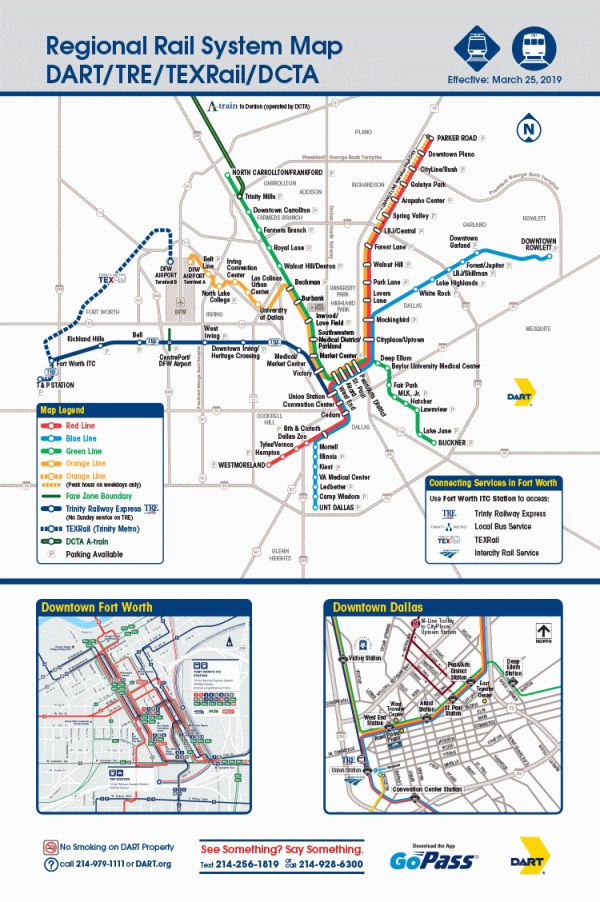Written by: Austin Ng. Article originally posted on the Interurban Railway Museum blog.
Upon arrival in Historic Downtown Plano, you might find several old-looking buildings, largely made of brick. If you have enough time to wander, you might run into another brick building that is a little different from the rest. This brick building has a large tower, and it sits next to a big train. This giant, red train in the middle of a park might be cause for a few questions, and we at the museum (the brick building with a tower) are happy to answer them.
Here are the 5 most frequent questions we hear from visitors at the Interurban Railway Museum.
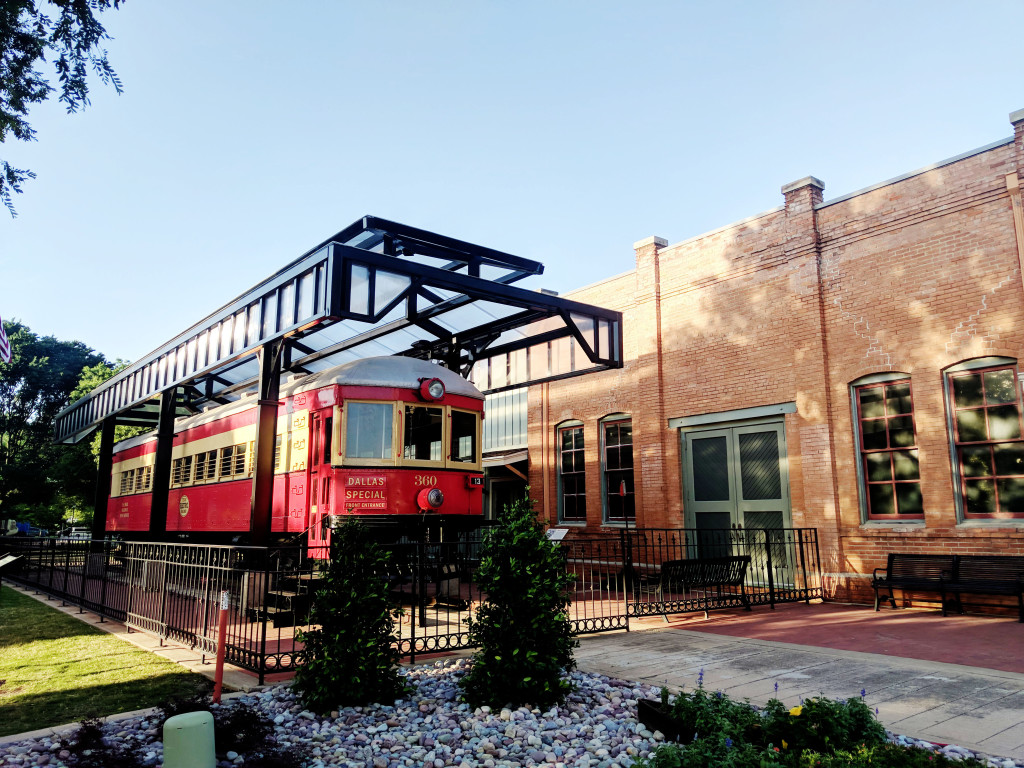
Question 1: Is the train real?
Yes, it is! It was an interurban train which means that it traveled between urban areas. The American Car Company in St. Louis, Missouri built the train in 1911. The Texas Electric Railway purchased the train the same year and sent it into service as Car 11. In 1914 the train received a new name, Car 360, which it retains today. Car 360 served as a passenger car until 1932 when it was rebuilt as a Railway Post Office. Servicing the northern half of the Texas Electric Railway, Car 360 and its crew ran both mail and people from Denison to Dallas and every stop in between. Car 360 completed its life of service in 1948, having operated for a total of 37 years. Today it sits in front of the Interurban Railway Museum, which was previously the Plano Station for the Texas Electric Railway from 1908 to 1948. So, Car 360 rests exactly where it would have picked up passengers all those years ago.
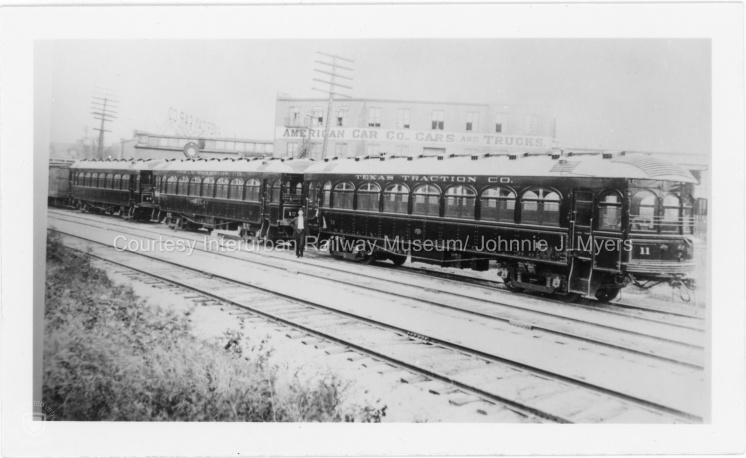
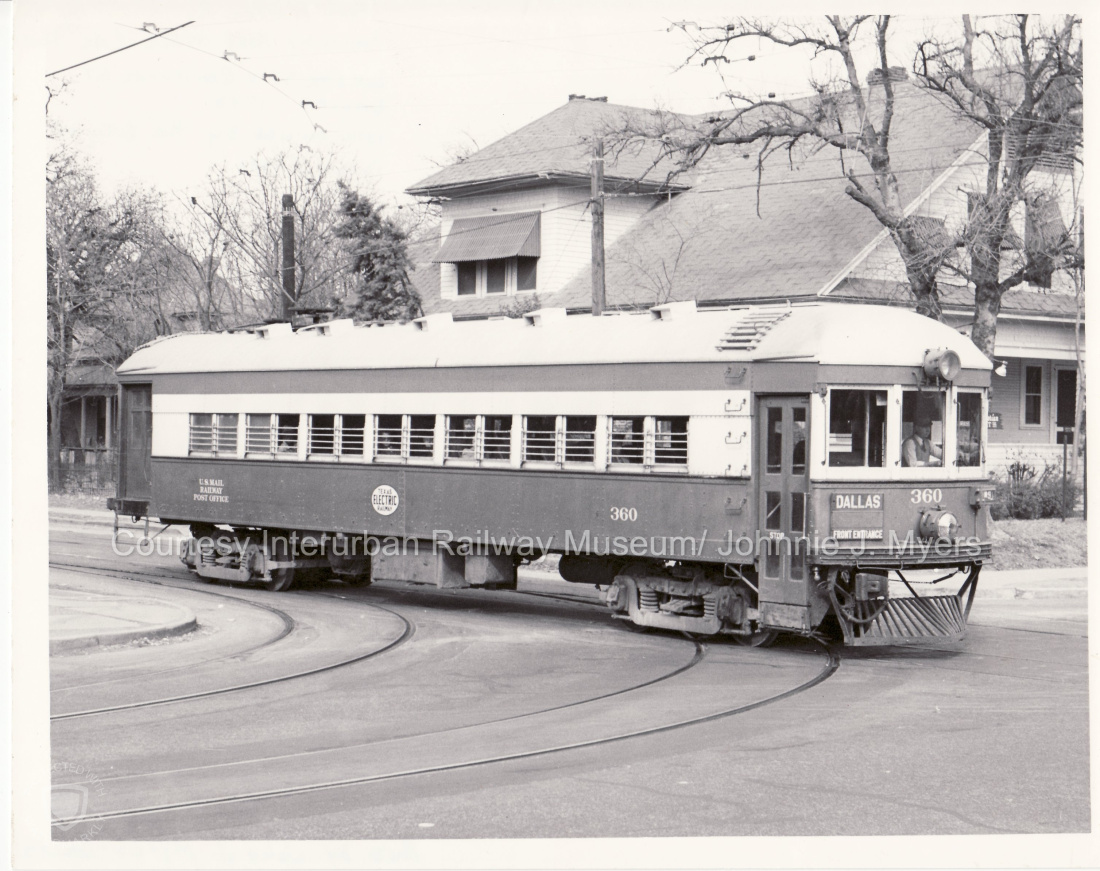
Question 2: Can we go inside the Train?
Certainly! In fact, we encourage it. Just find one of our lovely docents and they will gladly take you for a tour while the museum is open. The tour will show you the Railway Post Office, old advertisements, and the stylish travel accommodations of Car 360. You’ll even get a chance to sit in the Motorman’s chair!
For safety, when temperatures on board the train reach 100 degrees, Car 360 will be closed. You can still get a view inside the train by watching our virtual tour inside the museum.
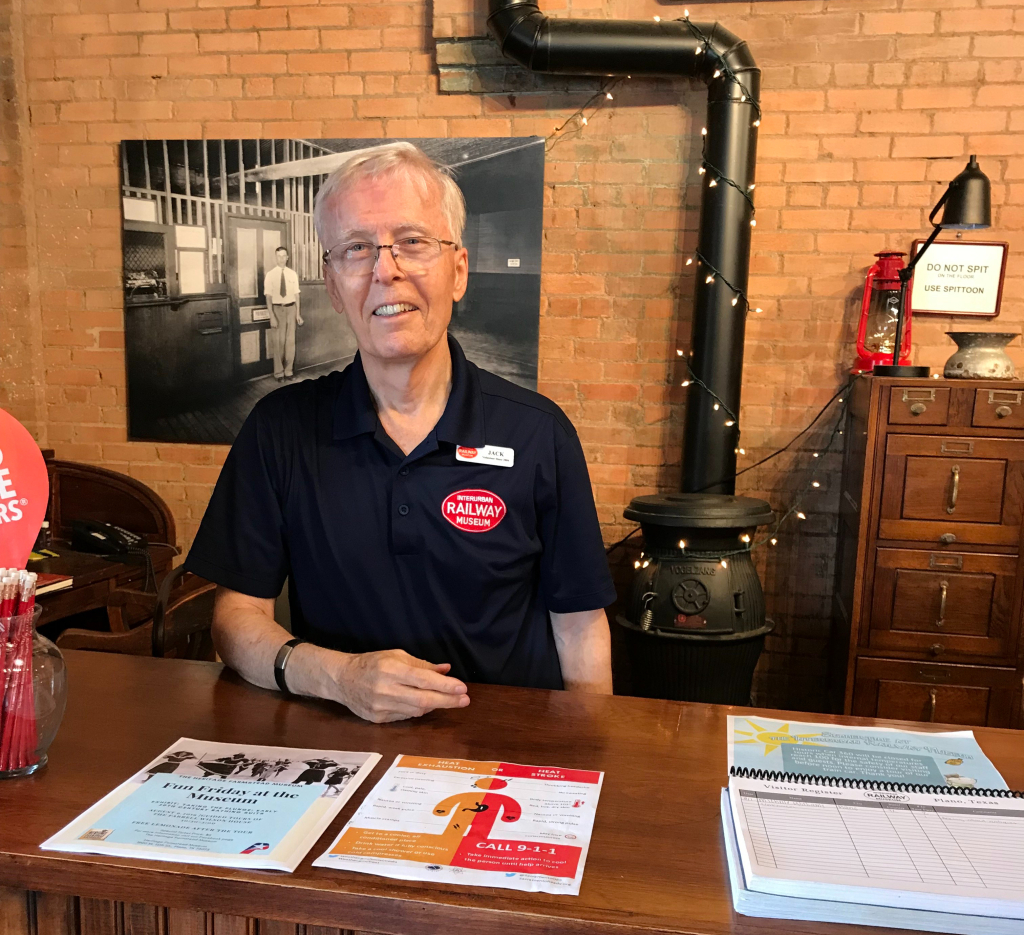
Question 3: Can we take pictures?
Yes, you may! Just make sure that the flash is off while you are taking pictures. Our docents would also be happy to take photos of you and your family.
We also welcome professional and aspiring photographers. The train and museum make wonderful backdrops for an extensive variety of photograph themes from graduations to weddings, and even prom! Should you need pictures inside the train, just find a docent so we can let you in.
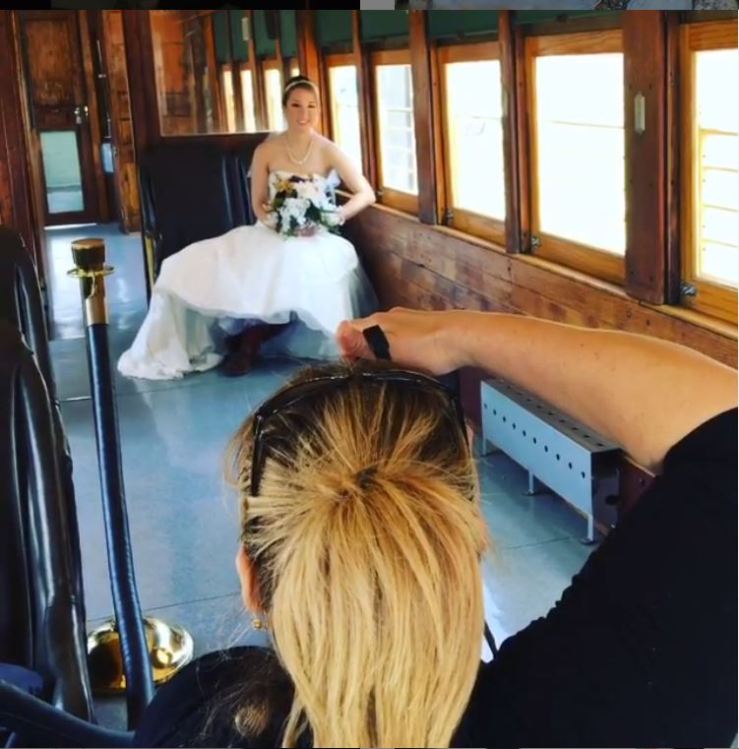
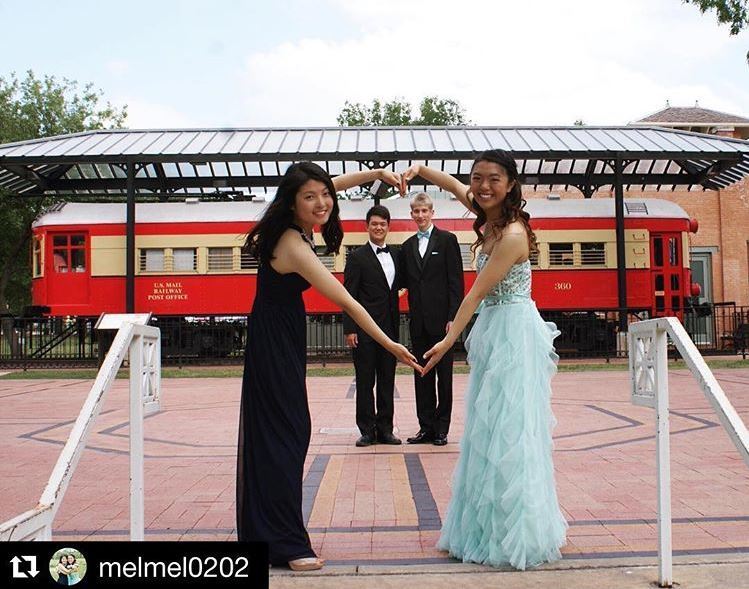

Question 4: How far could you get with the Interurban?
The Texas Electric Railway was one of the largest interurbans in the south, with over 226 miles of track. Passengers could ride trains from Denison to Dallas, Dallas to Waco, or Dallas to Corsicana. That’s farther than the DART train goes today! Below are some maps for comparison.
Before the trains arrived, most long-distance travel required animal-drawn wagons. The wagons could take all day, or even multiple days, to travel the same distance as an interurban train. Slow speed coupled with the general discomfort of wagon travel ensured most people did not travel far from the towns they lived. On Car 360, however, a full trip from Denison to Dallas took about three and a half hours, and that time includes each stop Car 360 had to make while delivering mail. A standard passenger car could make the trip even faster. With a top speed of sixty miles per hour, interurban trains allowed passengers reach places they previously could not even dream of seeing.
Question 5: How much did it cost to ride the train?
Train prices depended on how far you wanted to go. The farther you traveled, the more you had to pay. You could figure out just how much to pay by looking at a ticket and using some math. Use the ticket below and follow the steps to figure out the cost for a Plano to Dallas trip.
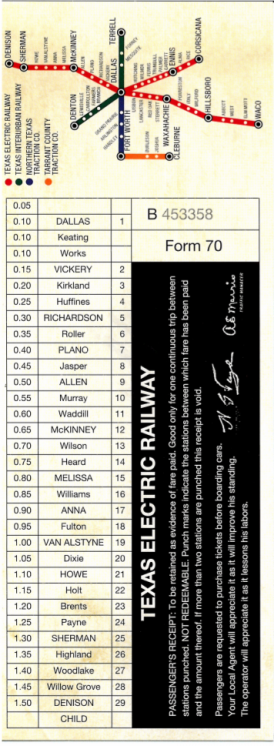
1) Find the price next to Plano in the left column. It should read “0.40” which means 40¢.
2) Then find the price for Dallas, also in the left column. It should say “0.10” which means 10¢.
3) The price you had to pay was the difference between the prices of Plano and Dallas. 40¢ minus 10¢ equals 30¢.
So, a one-way trip from Plano to Dallas would have cost 30¢. Children payed half price, in this case 15¢.
A day pass for the DART train today costs about $5.00. So does the fare for the Texas Electric Railway seem like a better value? Remember, at the time the trains were running, the value of money was different. The average person’s salary in 1910, according to the US census, was only 22¢ per hour. Even a motorman in 1948 only made 97¢ per hour. In those cases, 30¢ for a one way trip was quite expensive, probably much more expensive than today’s DART pass. So, people who rode the Texas Electric Railway usually only did so for special occasions. There were some, however, who used the train to get to work or school. The interurban’s range, speed, and reliability opened the door for many people to see life outside their towns and take advantage of once far-off opportunities. Granting the ability to travel freely, the interurban’s service was well worth the price.
The Texas Electric Railway has a long and interesting history, only some of which we were able to cover here. Inside the Interurban Railway Museum, you will find out even more about the technological marvel of the Texas Electric Railway. Discover how the railway came to be, how it worked, and the people it served through our unique exhibits and exciting artifacts. We’re certain that you’ll come up with more questions as you explore, and we would be delighted to answer them.


